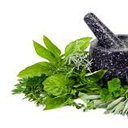Anticancer activity of flavane gallates isolated from Plicosepalus curviflorus.
Cuvinte cheie
Abstract
BACKGROUND
Previous investigation of the methanol extract of Plicosepalus curviflorus leaves led to the isolation of two new flavane gallates (1, 2), together with other compounds including quercetin (3). The stems of P. curviflorus are used traditionally for the treatment of cancer in Yemen.
OBJECTIVE
The aim of this study was to evaluate the anticancer activity of the plant methanol extract as well as isolated compounds (1-3).
METHODS
The human cancer cell lines used were; MCF-7, HepG-2, HCT-116, Hep-2, HeLa and normal, Vero cell line using the Crystal Violet Staining method (CVS).
RESULTS
Quercetin (3) possessed the highest anticancer effect against all five cell lines (IC50 ranging from 3.6 to 16.2 μg/ml). It was followed by 2S, 3R-3, 3', 4', 5, 7-pentahydroxyflavane-5-O-gallate (1), with IC50 ranging from 11.6 to 38.8 μg/ml. The weakest anticancer activity was given by 2S, 3R-3,3',4',5,5',7-hexahydroxyflavane-3',5-di-O-gallate (2) with IC50 ranging from 39.8 to above 50 μg/ml, compared to vinblastine sulphate as reference drug. Colon, liver and breast cell lines seemed to be more sensitive to the tested compounds than the cervical and laryngeal cell lines. Concerning the cytotoxic effect on Vero cell line, the pentahydroxyflavane-5-O-gallate (1) showed the highest IC50 ( 138.2 μg/ml), while quercetin exhibited the lowest IC50 to Vero cells (30.5 μg/ml), compared to vinblastine sulphate as reference drug (IC50: 39.7 μg/ml).
CONCLUSIONS
The results suggest the possible use of compounds 1 and 3 as anticancer drugs especially against colon and liver cancers.


